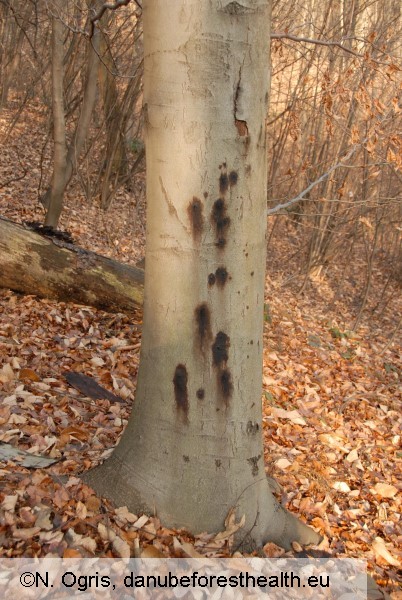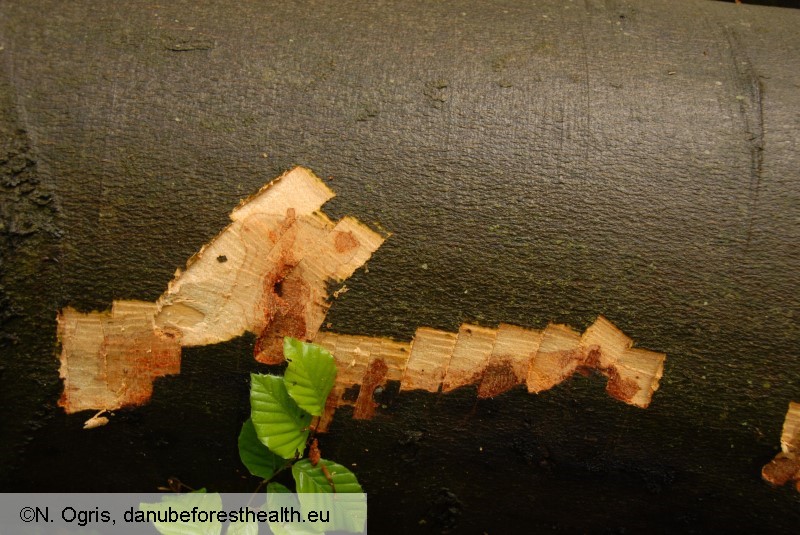Chromista
Phytophthora diseases
Phytophthora spp.
Nikica Ogris, Thomas Cech
|
|

Fig. 1. Black stain on the bark

Fig. 2. Necrosis in the bark
DETECTION PERIOD:
Whole year
DESCRIPTION:
The genus Phytophthora covers more than 140 species and all cause various plant diseases. Among indigenous species, the most common are P. plurivora and P. cambivora. Among them are also quarantine species such as P. ramorum and P. kernoviae. Symptoms of the disease are seen as twigs and shoots dieback, the appearance of necrotic spots on the leaves or the necrosis of the bark with black staining, which causes the decay of various types of woody plants from many botanical families.
HABITAT:
The host plants of Phytophthoras in the forest are most commonly infected: oaks, beech, alder, chestnut, maple, ash, viburnum, blueberry, larch.
STATUS:
Phytophthoras are quite frequent and widespread in the Danube region.
IMPACT:
Phytophthora have an exceptional impact on the forest health. They are often involved in the complex diseases where several harmful factors are involved. Phytophthoras represent continuous stress for the plant. Since they first cause the dieback of roots, their existence is hidden at first. Only later, their symptoms are also expressed on the trunk as black staining on the bark and higher on the tree as dieback of branches, smaller leaves and in the blush of leaves. The disease is more frequent in the areas of floods and droughts.
SIMILAR SPECIES:
All species of Phytophthoras cause more or less similar symptoms, on deciduous trees and conifers. Determination to the species level is possible only in the laboratory. Staining of the bark may be due to different insect species, e.g. bark beetles, splendor beetles and long-horned beetles. The distinctive sign is the presence of galleries in the bark and/or wood. In addition to the galleries we also search for sawdust, larvae, adult specimens. Even Armillaria root rot may cause bleeding on the stem, however with mycelial fans present in the bark.
|